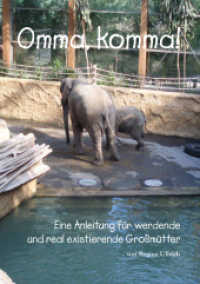- ホーム
- > 洋書
- > ドイツ書
- > Humanities, Arts & Music
- > Arts
- > history of arts
Full Description
Arbeit Macht Frei focuses on the various representations, meanings, and interpretations of the infamous phrase in art. The origin of the expression recalls the novel by German philologist Lorenz Diefenbach (1806-1883) from 1873 and the Weimar Republic, but is most associated with the National Socialists, who used it at the entrances to six of their concentration camps. The Nazis employed the slogan to misdirect with contempt and irony, and to instill false hope in the minds of prisoners to help prevent resistance and insurrection.
Batya Brutin discusses Holocaust survivor artists and their descendants who are artists as well as others who use the well-known phrase in their artwork. These artists have used the inscription as a motif from a personal or general point of view to convey political messages, present values, or wrestle with universal perceptions. This is the first booklength treatment of this difficult yet necessary topic in art.








